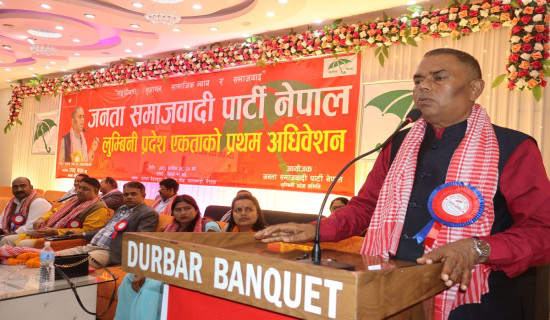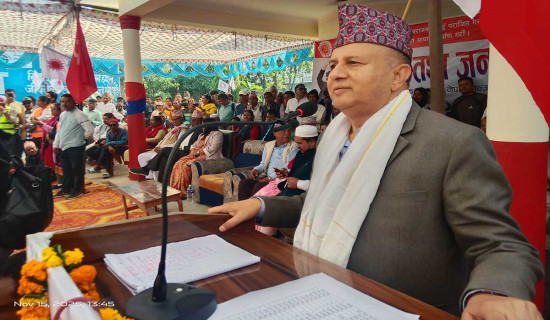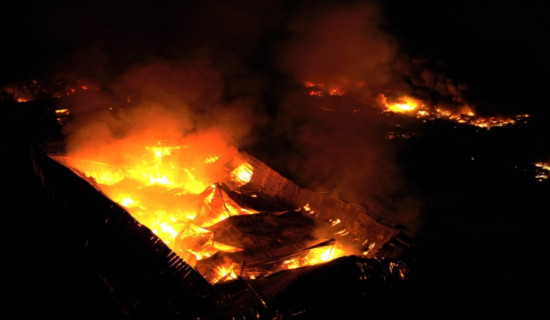- Saturday, 15 November 2025
Nepal's Preparedness On Disaster Mitigation
Nepal, a landlocked country nestled in the Himalayas, is prone to a wide range of natural disasters. From earthquakes to floods, landslides, and avalanches, the country faces numerous challenges that pose a significant threat to its people, infrastructure, and economy. In light of these vulnerabilities, disaster risk reduction (DRR) becomes paramount for Nepal. One of the primary reasons behind Nepal's vulnerability to disasters is its inadequate infrastructure. The country's hilly terrain and remote locations make it challenging to establish robust communication networks, evacuation routes, and early warning systems.
Despite the devastating earthquake in 2015, which claimed thousands of lives, the reconstruction process has been slow, leaving many communities exposed to future risks. Nepal must prioritise the development of resilient infrastructure to mitigate the impact of disasters effectively. Another critical aspect of disaster preparedness is public awareness and education. While some progress has been made in this area, it remains insufficient. Many Nepali citizens, especially those in rural areas, lack the necessary knowledge and understanding of disaster risks and how to respond to them. A comprehensive public awareness campaign, coupled with educational programmes in schools and communities, is essential to empower individuals and communities to take proactive measures to reduce their vulnerability.
Institutional framework
Nepal's institutional framework for disaster management is plagued by weaknesses. The existing structures lack coordination, and there is a lack of clarity regarding roles and responsibilities among different agencies. This hampers effective disaster response and recovery efforts. Strengthening the institutional framework by establishing clear lines of authority, enhancing coordination mechanisms, and ensuring adequate resources allocation is crucial to improving Nepal's preparedness.
Climate change has exacerbated the frequency and intensity of natural disasters in Nepal. The melting glaciers, erratic rainfall patterns, and rising temperatures pose new challenges that require immediate attention. Nepal's preparedness must adapt to these emerging risks by integrating climate change adaptation strategies into its DRR plans. This includes investing in climate-resilient infrastructure, promoting sustainable land use practices, and implementing early warning systems that account for changing climate patterns.
One of the primary reasons why disaster risk reduction is essential for Nepal is the need for proactive measures. The country lies in a seismically active zone, making it highly susceptible to earthquakes. The devastating 2015 earthquake, which claimed thousands of lives and caused extensive damage, serves as a stark reminder of the urgency to implement DRR strategies. By investing in early warning systems, retrofitting vulnerable structures, and conducting regular drills, Nepal can significantly reduce the impact of future disasters. Proactive measures also include land-use planning, zoning regulations, and building codes that prioritize safety and resilience.
Disaster risk reduction should focus on building community resilience. The country's diverse topography and remote regions make it challenging to respond effectively to disasters. Therefore, empowering local communities to take charge of their own safety and preparedness is crucial. By promoting community-based disaster management committees, training volunteers, and disseminating knowledge on disaster response, Nepal can enhance its resilience at the grassroots level. Encouraging community participation in decision-making processes and integrating traditional knowledge with modern techniques can further strengthen resilience.
Disaster risk reduction is closely linked to sustainable development in Nepal. The country's economy heavily relies on agriculture, which is vulnerable to natural disasters such as floods and droughts. By integrating DRR into development plans, Nepal can ensure that infrastructure projects, urbanisation, and agricultural practices are resilient to potential hazards. Implementing climate-smart agriculture techniques, constructing resilient infrastructure, and promoting eco-friendly practices can minimise the vulnerability of communities and foster sustainable growth. DRR should be an integral part of Nepal's development agenda to ensure long-term prosperity.
Nepal cannot tackle the challenges of disaster risk reduction alone. International cooperation and support are crucial for enhancing the country's preparedness. The international community should provide technical assistance, financial aid, and knowledge sharing to help Nepal build its capacity in disaster management. Additionally, regional collaborations with neighbouring countries, such as India and China, can facilitate the exchange of expertise and resources, enabling Nepal to better respond to cross-border disasters.
Capacity building
Given Nepal's geographical location and shared vulnerabilities with neighboring countries, international cooperation is vital for effective disaster risk reduction. Collaborating with regional organisations such as the South Asian Association for Regional Cooperation (SAARC) can facilitate knowledge sharing, resource mobilisation, and joint response mechanisms. International support, including financial aid, technical expertise, and capacity building, can significantly enhance Nepal's ability to mitigate and respond to disasters. By actively engaging in global platforms like the United Nations Office for Disaster Risk Reduction (UNDRR), Nepal can leverage international cooperation to strengthen its DRR efforts.
In conclusion, disaster risk reduction is of utmost importance for Nepal due to its susceptibility to various natural hazards. Proactive measures, community resilience, sustainable development, and international cooperation are all critical components of an effective DRR strategy. By investing in early warning systems, empowering local communities, integrating DRR into development plans, and collaborating with international partners, Nepal can significantly reduce the impact of disasters and ensure the safety and well-being of its people. It is imperative for the government, civil society, and international stakeholders to prioritise disaster risk reduction as a fundamental aspect of sustainable development agenda. Nepal's preparedness on disaster risk reduction is still a work in progress. The time to act is now.
(Dr. Lohani is the Clinical Director at the Nepal Drug and Poison Information Centre. lohanis@gmail.com)













-original-thumb.jpg)

-original-thumb.jpg)
